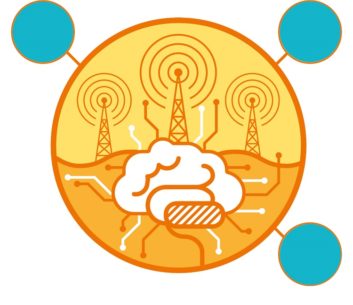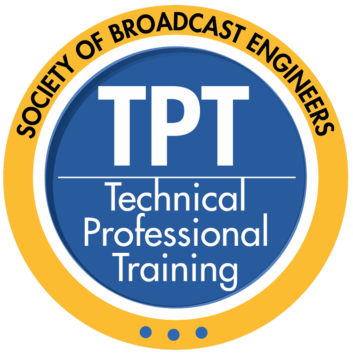 I see trouble ahead in our business in the shortage of qualified broadcast engineers.
I see trouble ahead in our business in the shortage of qualified broadcast engineers.
I am not speaking of IT people. I am speaking of the guy in a T-shirt and jeans who gets to the transmitter, looks for the problem, reads the schematic, crawls inside the box and replaces R-16, R-17, C-232 and Q-4, and the music again blares forth.
We are losing those guys every day, and they are being replaced by the guy who walks into the site, looks at the box, grabs his cell phone, calls BE or Nautel to find which board to pull, and ships it back while waiting for a loaner to get the rig going.
I never thought of myself as an old-timer. Starting in the business in 1963, old-timers were the guys I learned from, mostly World War II graduates. They knew everything about audio and RF. I wished I knew a tenth as much as they did.
My first real bit of engineering was converting a 50 kW FM station to stereo in 1963. No one listened to FM then, I think there were 10 FM radios in the city and five were in Cadillacs owned by mob hit men.
I remember putting the stereo generator in an eight-foot rack. It took up four feet of the rack and had enough 12AU7s in it to heat the building. It had two outputs, one L+R that went into the phase modulator of the serrasoid exciter and the L–R output that went into the exciter about 200 multipliers later (the crystal frequency was multiplied 864 times).
It was a technical nightmare compared to mono FM. Getting two matched phased phone lines from the studio to the transmitter over three exchanges was another task. But we were stereo most of the time.
The FCC had a rule that if you weren’t transmitting stereophonic program material for more than a certain length of time, you had to shut the stereo pilot off so as not to mislead the 10 listeners by illuminating their stereo beacon. So the pilot on/off was wired into the old Rust remote control so the studio could turn it off when a monophonic recording of a symphony played.
Times changed; we wound up with RF STLs, stereo generators on a single chip, CD players, computers and lots of stuff made in foreign countries that wasn’t worth fixing or whose parts were not available, so when they broke they wound up on a shelf at the transmitter site.
Concerted effort
Today many stations have guys who can swap XLRs or RCA plugs from one item to another. But we also still have transmitters, antennas, phasors and all of the other sundry items that make a radio broadcast station distinct from an internet music source (I don’t call internet streams “radio stations” because you can’t have radio without RADiate).
When we talk of RF, we talk of a whole lot more than 5 volts, maybe 3,000 times that, and a whole lot of amps both DC and RF. Sending an IT guy into that is like sending a 90-year-old woman into the Indy 500 with her Buick LeSabre. She ain’t gonna win and she will probably die trying.
One of the problems is lack of interest. When I was young I got a ham license at 12, built my own CW rig with a 6L6, turned it into a phone rig with another 6L6 and a Heising choke, built a superregen receiver and went on 80, 75 and 40 meters. Parts from a few old television chassis and old radios my dad brought home, parts from a military surplus store down the road in 1960 there was still a lot of WW2 surplus.
Try that today; there are no radios or television sets with good parts or even worth trying to get parts from, there is limited surplus and most of the corner parts stores are gone. You can’t even build a Heathkit anymore.
A few years ago, I built a guitar amplifier for my son. What a project, just to find octal tube sockets for the 6L6s took forever. Kids have no interest in this kind of stuff anymore.
We all, especially big conglomerates who own most of the broadcast stations, have to make a concerted effort to get high school and college kids interested in broadcast engineering as a career.
Get them interested, get them educated, best by shadowing an old goat who can show them the tricks of the trade. Yes an EE degree is great to learn Kirchoff’s laws, but Kirchoff never spent several hours at 3 a.m. looking into a dead HT-25. The likelihood is that the old goat will tell the youth that he should probably look at the screen blocker kapton, a lesson the youth is not likely to forget.
Broadcasters have to realize that us old goats are going away, and they had better not only get the youth trained to take over but make the pay comparative to working in an office as an IT manager so they don’t do just that.
We, the limited number of old-timers who learned from the old old timers and through the wisdom of age and smelly fingers from getting too close to the ATU coils, have to keep alert for anyone who might express the slightest interest in our business. I ask around schools, especially the science teachers, if they have any students who seem interested in electronics.
We have to persuade them, nurture them and tell them lies (don’t mention having to walk into a remote site at 2 a.m. in a blizzard with the temperature at –30). Tell them they will have a job for the rest of their life, they can’t ship their job off to China or India or wherever.
At least if we all make an effort to replace ourselves, things can stay status quo. If our ranks aren’t refilled soon, the radio dials are going to start getting really quiet.
The author is a veteran industry engineer.
Radio World sidebar: TPTP Aims to Help
 The Society of Broadcast Engineers recently announced a response to ongoing concerns about new technical talent choosing broadcasting as a career by creating the Technical Professional Training Program.
The Society of Broadcast Engineers recently announced a response to ongoing concerns about new technical talent choosing broadcasting as a career by creating the Technical Professional Training Program.
“As technology and the average age and tenure of technical professionals advances there is concern to adequately fulfill the technical staffing needs in the long term,” SBE noted. The goal of the program is to train new entrants to the field of broadcast technology through a series of webinars, mentoring, certification support and other resources.
Learn more about it at http://sbe.org/sbe-technical-professional-training-program/
Comment on this or any story. Email [email protected] with “Letter to the Editor” in the subject line.












